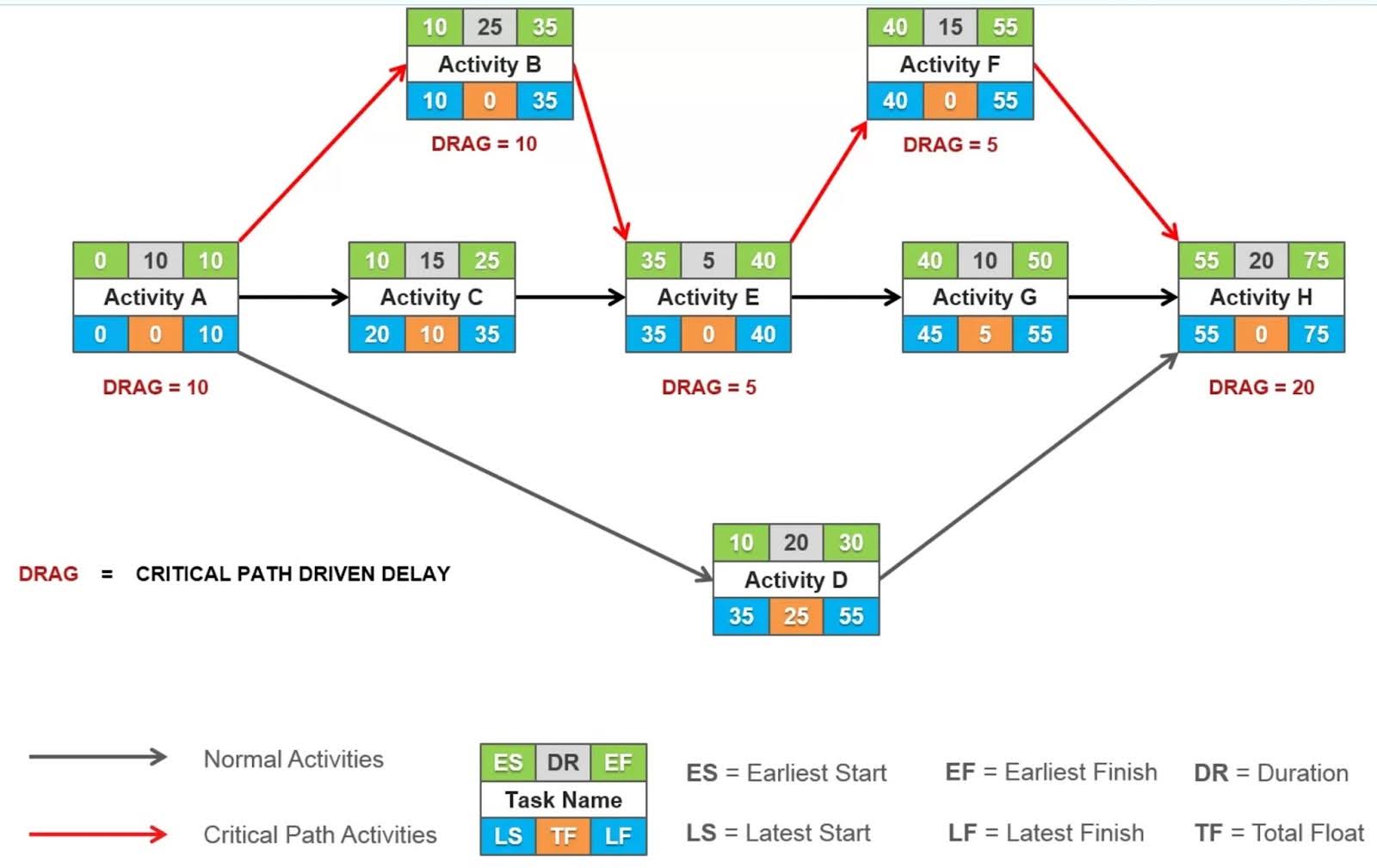Construction projects might seem straightforward—architects & engineers design, and the construction team brings the vision to life. But beneath this simplicity lies a hidden web of schedules, stakeholders’ expectations, and careful resource management, where a single misstep can derail an entire project.
What happens when material delays ripple through the timeline? Or when conflicting priorities between teams jeopardize critical milestones? Without the right approach, these challenges can spiral into missed deadlines, inflated budgets, and ultimately strained relationships.
This is where CPM scheduling comes in—not as a reactive fix but as a proactive strategy to anticipate challenges, align resources, and keep projects on track.
After years of managing and handling construction projects, I’ve recognizedCPM as the foundation of successful project execution rather than a simple tool.
I’m Goutam Panda, a Senior Project Manager and Construction Scheduler, and I’m here to share how CPM scheduling is redefining modern construction management and why it’s an indispensable ally for tackling today’s complex projects.

Goutam Panda, Senior Project Manager and Construction Scheduler
Why Modern Construction Needs CPM Scheduling
Today’s construction landscape includes more complex projects—innovative or unconventional structures, sizes covering enormous areas, or locations under challenging terrains—all of which expect to follow timelines strictly and use limited resources. Project managers must navigate countless interdependencies to meet growing speed, cost-efficiency, and quality expectations.
With these expectations and constraints, project managers must prevent delays—as even the smallest ones can heavily impact the entire project.
This is where CPM scheduling enters the plan, providing us with the structure and foresight to keep our projects on track.
To illustrate, let’s take an example.
You’re tasked with building a 25-story commercial tower in the heart of a busy city. The client is counting on that 18-month deadline—missing it means broken leasing agreements and a potential loss of trust.
How do you ensure every team member stays aligned under pressure, from cradle to grave of a project life cycle?
First, we use CPM scheduling to identify all the tasks needed to complete the project and break them into critical and non-critical activities. We put tasks like excavation, pouring of the foundation, steel framing, building dry-in, and elevator installation into the critical path because any delay in these will push back the project’s completion date.
Imagine unexpected heavy rainfall midway through the project, halting excavation work. This would create disruptions and delay the entire project. With our CPM schedule, we can foresee, plan, and quickly devise a solution that avoids delay in the overall critical path: shifting resources to expediting reinforcement steel procurement and pre-fabricating off-site, ensuring the next steps begin as soon as we complete the foundation work.
A CPM schedule mitigates risks and helps us adapt to changes during the project timeline. According to the Project Management Institute, organizations that use structured scheduling techniques like CPM report a 28% higher success rate in project completion. This increase demonstrates the method’s value in managing unexpected challenges.

CPM scheduling example. (Image: Catawba Civil LLC)
Additionally, CPM scheduling helps us prioritize resources effectively. We can focus on critical tasks first and reschedule non-critical ones, like landscaping and parking lot paving, to later phases. By allocating strategically, we can prevent bottlenecks and ensure we direct labor and materials to activities that need it most.
Lastly, this scheduling method provides clarity to all stakeholders. In our example, the transparent schedule allows our contractors and suppliers to align their efforts seamlessly. They’ll know when the materials are needed, avoiding unnecessary storage costs or late deliveries. This level of coordination is invaluable, especially in high-stakes projects, where even minor miscommunication can cause costly delays.
In short, we need CPM scheduling to:
- Mitigate risks and adapt to changes,
- Prioritize resources to ensure efficiency,
- Enhancing communication and transparency.
CPM scheduling allows us to complete projects on time and within budget, even with unforeseen disruptions. It transforms our approach from reactive problem-solving to proactive planning, allowing us to manage projects efficiently and confidently regardless of the complexity.
How CPM Brings Precision to Modern Construction
In construction, precision isn’t simply about following the blueprint—it’s about making decisions that keep our projects moving smoothly, even as challenges arise. CPM scheduling is our compass in making decisions, helping us prioritize tasks, allocate resources, and adapt to projects’ dynamic conditions.
Let’s examine how CPM empowers us as project managers to take control of complexity, one decision at a time.
1) Transforming uncertainty into actionable insights
Uncertainty, such as weather delays, supplier issues, and labor shortages are inevitable in construction. These challenges can become manageable with a clear structure, saving us time, money, and other resources.
While it can’t eliminate uncertainty, CPM scheduling transforms them into manageable risks.
For example, there’s a delay in the delivery of materials. Instead of panicking, we can use CPM to assess the impact of this delay on our critical tasks. If significant, we can focus on other less critical tasks to keep the team’s momentum and minimize the overall disruption.
2) Bringing clarity to task prioritization
As project managers, we should know that not every task carries the same weight—some are more critical than others.
This is where CPM helps us. We can use it to focus on where our resources are most needed, a.k.a. the critical path. This can prevent the “everything is urgent” mindset from derailing our progress.
3) Providing a “Time is money” perspective
Construction timelines are interconnected with the project’s budget. With CPM, we can visualize the costs of delays on critical tasks, empowering us to act decisively to prevent overruns.
This is proven and tested. According to research by the Construction Industry Institute, robust scheduling practices, including implementing CPM scheduling, can reduce costs by up to 15%. This demonstrates how efficiently we use our resources, from manpower to budget.
4) Fostering collaboration across teams
Construction projects involve many people, from architects and contractors to suppliers and clients. CPM acts as our shared language, providing a clear timeline aligning everyone’s efforts.
5) Turning data into dynamic adjustments
Construction projects are rarely static, and here’s where CPM can showcase its expertise—adaptability.
CPM can help us update our schedules and use them to pivot when things change.
Beyond Tools: The Strategic Mindset of CPM
CPM scheduling maps tasks and sharpens our strategic thinking. It empowers us project managers to:
- Make confident decisions
- Optimize efficiency
- Handle changes with clarity.
Whether adjusting resources or communicating with stakeholders, CPM ensures that every action is supported by data-driven insights, allowing us to maintain project control at every step.

The CPM schedule also indicates a float for each activity that identifies how much the activities can be delayed without causing a delay in the project. (Image Source: https://www.project-risk-manager.com/blog/pert-vs-cpm/ )
Technology and CPM: What’s Next?
How can we truly leverage CPM? Yes, it’s a strategic tool by itself, but its possibilities are endless, thanks to technology.
When we integrate CPM with other tech, we can maximize its ability to adapt, predict, and deliver under complex conditions. In fact, according to a Deloitte report, 76% of engineering and construction executives plan to invest in at least one digital technology in the coming year.
This number highlights the need for technology adaptation, such as the following.
Artificial Intelligence
With its predictive analytics, AI could forecast potential delays or resource shortages. These predictions allow us to be proactive, adjusting schedules and allocating resources to meet changing factors and mitigate risks.
Building Information Modeling (BIM)
By integrating 3D design data into CPM schedules, we can ensure that design changes are immediately reflected in the project timeline, reducing the chances of miscommunication and errors. BIM ensures that the CPM schedule is automatically updated to reflect the necessary adjustments in construction activities, whether structural components or the design itself.
Cloud-based Platforms
These platforms facilitate real-time collaboration by providing centralized access to CPM schedules. Stakeholders, project managers, and clients can view and update project timelines anytime and anywhere. We can ensure everyone has the most updated information through cloud-based platforms, keeping them on track.
Embracing these technologies changes how we use CPM scheduling. Instead of a static planning tool, it becomes a dynamic, strategic asset.
CPM Scheduling from a Leader’s Perspective
Clarity, collaboration, and control define leadership in the construction industry. CPM helps us achieve these three pillars, making us effective and efficient leaders.
The scheduling method empowers us to anticipate challenges, prioritize tasks, and rapidly adapt to changes. Instead of being reactive, we can use CPM to recalibrate, ensuring we can deploy resources effectively to continue progress.
As a communication tool, this technique allows us to provide clear updates, justify changes, and build trust with stakeholders. With CPM, we can transform challenges into opportunities, redefining leadership from managing to driving success.
From Reactive to Proactive: CPM Scheduling as the Key to Modern Construction Success
Reflecting on my experiences with many projects, I’ve realized that CPM scheduling has shifted modern construction management from a reactive process into a proactive strategy.
CPM enables teams, from managers to members, to stay ahead of challenges rather than simply responding to them. It equips us leaders with the tools to make data-driven decisions, ensuring we can deliver any project on time and within budget, regardless of the complexity.
Additionally, tech advancements are paving the way for CPM to become more powerful and adaptable than ever. These advancements will also promote greater efficiency and innovation, catapulting the industry to its fullest potential.
By embracing CPM scheduling, we can redefine the projects of tomorrow, building smarter and innovative infrastructure everywhere.
About the Author
Goutam Raj Panda, PMP, PMI-SP, is an experienced construction manager with expertise in critical path scheduling, project controls, and risk management. He holds a Master’s in Construction Engineering and Management from NC State University and has successfully delivered multimillion-dollar projects, including historic renovations and large-scale infrastructure upgrades. Certified with PMP and PMI-SP, Goutam leverages tools like Primavera P6 to optimize project efficiency and address complex industry challenges.
Resources:
Project Management Institute. (2021). Pulse of the profession: Beyond agility.
Construction Industry Institute. (n.d.). Best practices for preventing out-of-sequence construction activities and minimizing their impacts.
Deloitte. (2024). 2024 engineering and construction industry outlook.


































